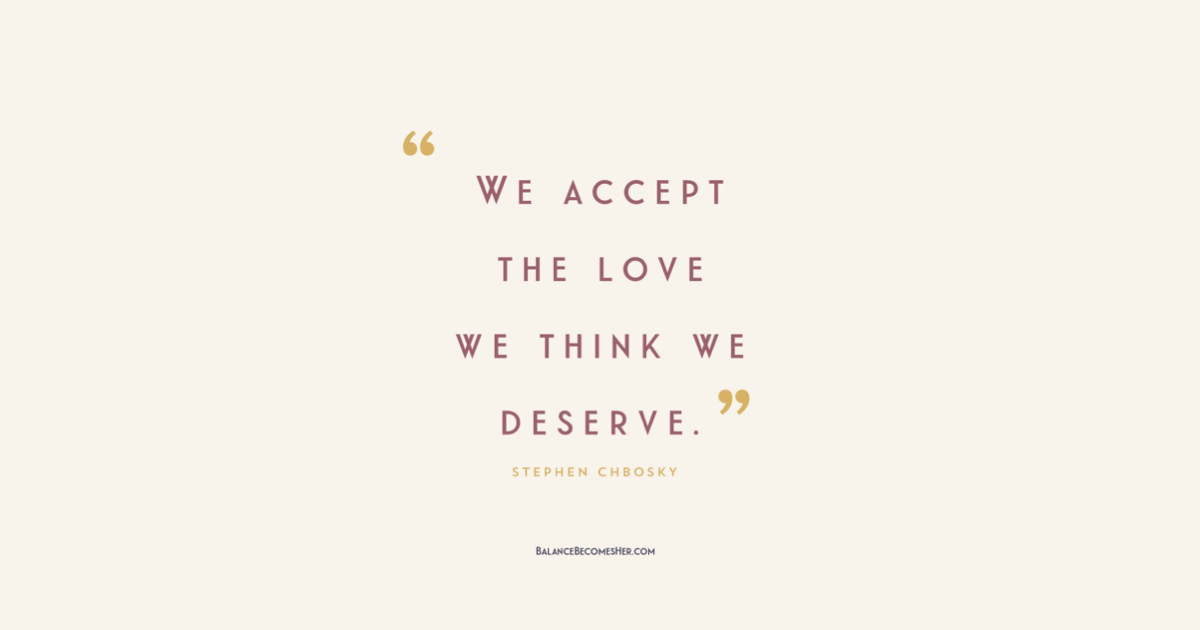Are Your Self-Paradigms Keeping You From Happiness?
par·a·digm
noun
- A typical example or pattern of something; a model
A self-paradigm is the ways we look at ourselves and the world around us. It’s the lens through which we make sense of our experiences and assign motivation to other’s actions. It’s basically a set of mental glasses we see the world through. But what if those glasses are scratched or dirty or the prescription is outdated?
We all have self-paradigms. Many of them are from childhood, some of them from experiences we’ve had as adults. The key to a healthy self-identity is to recognizes what our self-paradigms are. Most of them are so ingrained into us, we don’t even see them. The way we view each experience is shaped by our paradigms. We could be robbed at gunpoint and see ourselves as a victim and someone who always has bad luck, or we could view ourselves as a survivor who was lucky to only be robbed. That is our paradigms at work.

The good news is, we can change our paradigms. Science does it all the time. Science believes one thing to be true and when met with evidence to the contrary, the paradigm shifts. We can change our paradigms and by doing this, completely alter the way we go through life and the way we experience things. We can feel joy rather than despair, hope rather than fear, strength rather than weakness, success rather than failure. Every time we challenge those negative self-paradigms and reframe them, we are changing the reality we live.
Self-paradigms are often self-fulfilling prophecies. If you believe something about yourself, it’s true. That’s all reality is anyway – it’s how we interpret ourselves and events. Reality is relative. A person living in a cardboard box can believe they are the most fulfilled person in the world and it’s true. Happiness is not quantitative. On the flipside, there are plenty of people who have second homes, who will never be fulfilled and who will feel like they never have enough.

For example, I grew up in a perfectly clean house – immaculately clean. And it wasn’t just clean, it was professionally designed and furnished. There was a reason for it. We were constantly selling our house. We were flippers before it was ever a thing and my parents made a small fortune doing it. But everything in the house, all the decisions we made from the wall colors to my bedspread, were made with resale value in mind. So, to me, our house became a commodity – something to be bought and sold – it needed to be something the average person would be drawn to. There were no crazy bedroom paint colors or posters tacked to my bedroom wall. And when the house was on the market? It had to look like we didn’t live there. Everything was about what other people would think about our house. Nothing could be out of place.
That’s not to say I had a bad childhood. I had a great childhood. But moving all the time shaped how I viewed the house I lived in. When I moved out and went to college, I was a nightmare roommate. I had to have everything clean. Curb appeal was part of my vocabulary. I spent hours maintaining the yard of the house we rented and making it better than it was before we moved in. I completely redid the front yard. I scrubbed the walls because we weren’t allowed to repaint. I placed everything with precision. When the owner came in from out of town to check on it, she couldn’t believe how much better the house looked. I was rewarded for my hard work by her selling it. I had flipped the house I lived in for someone else without even realizing it.

When my husband and I bought our first house, I promptly painted the kitchen ceiling teal with a fuchsia stripe. That was me rebelling against a paradigm.
What do your self-paradigms tell you? Are they about money – that there will never be enough? Is it about your intelligence or how you look? Is it about what kind of parent you should be or that you should be dancing in the kitchen rather than crying in the pantry?
The first step in changing our self-paradigm is recognizing what they are. What are the things you believe you are? What are the things you believe you are supposed to be or supposed to do?
The second step in changing a self-paradigm is to reframe it.
Someone whose parents divorced while they were young may come to believe that romantic relationships aren’t safe – that they’re only temporary. So, they grow up holding a part of themselves back in each relationship or even subconsciously sabotaging it. Their paradigm is relationships are temporary and they will eventually be alone. Every part of that relationship is then viewed through that lens. When their partner has an especially busy season at work, they may feel their partner is pulling away and the relationship is ending. They pull back to try to protect themselves, eventually the relationship ends and the paradigm is reinforced.
But what if they question the paradigm instead of the relationship? What if they start looking at relationships around them that are strong and stable? What if they start examining their friendships that have worked and they start reframing their mindset to include the successful relationships they have now? What if they come to the conclusion that healthy relationships persevere when it’s between the right people? What if they start examining the cornerstones of successful relationships and realize communication is key and instead of pulling back, they vocalize their needs and feelings to their partner?

This is an example of challenging the paradigms we have and seeing if they are actually true and if they really fit into the kind of life we want to lead. We can’t fix other people, and maybe this relationship lasts and maybe it doesn’t. But if the new paradigm is that unhealthy relationships don’t last rather than all romantic relationships don’t last, the experience changes from proving all relationships fail to unhealthy relationships fail. Then, this person is no longer a victim of circumstance, but rather has power in the equation.
Self-paradigms are tricky because they are so deeply ingrained into our psyche they become a part of who we are. If we believe we are an anxious person, we are. If we believe we are worthy, we are. Self-paradigms can help us or hurt us in life depending on what they are. Changing our self-paradigms isn’t easy. It is in essence changing the way we view ourselves, our experiences and the world in general. But making sure you have healthy self-paradigms, examining them and reframing the negative ones will absolutely change your life for the better. It takes work and self-reflection, but the growth that comes from it is life changing and well worth the time and effort.
It won’t happen overnight. Self-paradigms are a part of who we are and often so ingrained in us we don’t even see them. You might recognize and change one and then realize a couple months or a couple years later that you have others. It’s a matter of constant self-evaluation but self-evaluation leads to growth and maturity. The key is never taking anything at face value and questioning everything you have come to know and believe. It’s uncomfortable. But it’s growth. And growth is what we are here for.

SHARE



